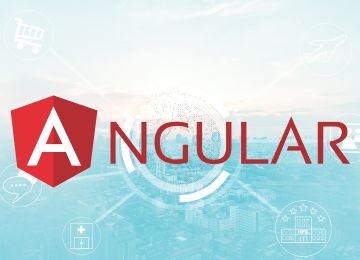
Angular online training in Hyderabad India
Angular is a popular open-source web application framework developed by Google that facilitates the development of single-page web applications (SPAs) and dynamic web applications. It is built on TypeScript, a superset of JavaScript, and follows the MVC (Model-View-Controller) architecture pattern. Angular provides a comprehensive set of features and tools for building scalable and maintainable web applications, including data binding, dependency injection, routing, and form validation. It also offers built-in support for reactive programming with RxJS and seamless integration with other libraries and frameworks.
SNS Tech Academy offers comprehensive Angular online training in Hyderabad, India, catering to individuals seeking expertise in building dynamic and scalable web applications. The training program covers a wide range of Angular concepts, including components, modules, services, routing, forms, and HTTP client integration. Participants engage in hands-on projects, real-world case studies, and personalized mentoring sessions, gaining practical experience in harnessing the full potential of Angular to develop modern and interactive web applications. Whether aspiring front-end developers, UI/UX designers, or IT professionals looking to enhance their skills, learners receive expert guidance and certification preparation to excel in today's competitive tech industry. SNS Tech Academy's Angular online training equips individuals with the knowledge and expertise needed to leverage the power of Angular and build cutting-edge web applications that deliver exceptional user experiences.
Angular Online Training course content :-
What you will learn
- Ab Initio Server Hardware
- Ab Initio Installation
- Ab Initio Data Profiles
- Ab Initio File Systems and Heterogeneous Database Systems
- Ab Initio Data Integration Design Specifications
- Ab Initio Application Graphs
- Ab Initio Application Test Plan
- Ab Initio Graph Development Standards Checklist
- Ab Initio Lifecycle Migration
- Ab Initio Application Operations
- Angular vs Angular 2 vs Angular 5
- Overview of Sample Application
- Course Overview
- Language Use for Development
- Different Editor Overview
- Environment setup for Angular5
- Installing an Angular 5 Application
- Starting an Angular 5 Application
- Hosting Angular5 application using seed
- Introduction
- Use of Component?
- What is Component Class
- Integrating Decorator
- Implement and defining the Metadata
- Importing Third Party Library
- Creating first App Component
- Loading/Bootstrapping App Component
- Create Directive using Components
- Binding/ Interpolation data in component
- Implementing ngIf Directives
- Implementing ngFor Directives
- Design Template in Angular5
- Building the Component
- Binding property and values
- Implement Input with Two-way Binding
- Implement Events with Event Binding
- Custom Pipes and Data transforming
- Component inside Component
- How to use Nested Component
- Use @Input to Pass data in Nested Component
- Use @Output to Pass data from Nested Component
- Interfaces Classes in Angular5
- Adding Styles to component
- Different Lifecycle Hooks
- Adding Custom Pipes
- How to use Module Id
- What is Dependency Injection
- Design a Service
- Build the Service
- Injecting the Service
- Building API Link
- Sending data in HTTP Request
- Exception Handling
- Observables from RXJS
- Reactive Extensions
- Subscribing data using Observable
- How Routing Works
- Configuring Routes
- Tying Routes to Actions
- Placing the Views
- Sending Parameters to a Route
- Activating a Route with Code
- Authenticate Routes
- Creating new angular-seed Project
- Form and ngForm in Ang5
- Stop Inbuilt Form Validation of Browser
- Add bootstrap to Style Forms and Text Input
- Use Radio Buttons in Form
- Use Select and Options in Form
- Use Checkboxes in Form
- Use ngModel for 2-way binding
- Data Binding in Angular5 Forms
- Use Model Object
- Binding Models
- Data Binding in Select Control
- Data Binding in Checkbox
- Data Binding in Radio Buttons
- Validation Classes
- Properties of ngModel Validation
- Display Error Messages in Form
- Add Style Controls in Errors
- Select List validation
- Deep inside the Select Control
- Enable/Disable Submit Button
- Top Form Level Validation
- Attributes of HTML 5
- Create Server Using Angular
- Post a Form data in Angular Server
- Event Handling in Form's Submit
- Adding Validation to form in Angular5
- Adding RsJx
- Using Observable and a Subscriber
- Send data to the Server
- Handling Error
- Dynamic Options for a Select Control
- External Date picker in Angular5
- Adding Time picker in Forms
- Styling up ng5-bootstrap
- Add Switch in Angular5
- Multiple Radio Buttons
- Starting with reactive form
- From builder
- Binding data
- Validation in form
- Run time validation
- Use of Module in Angular5?
- Declarations of Array in Angular5
- Import and Export Various Array
- Angular5 Providers
- Building Shared Module in Angular5
- EC2 Machine
- Intro to GitHub
- Deploy App on AWS

















